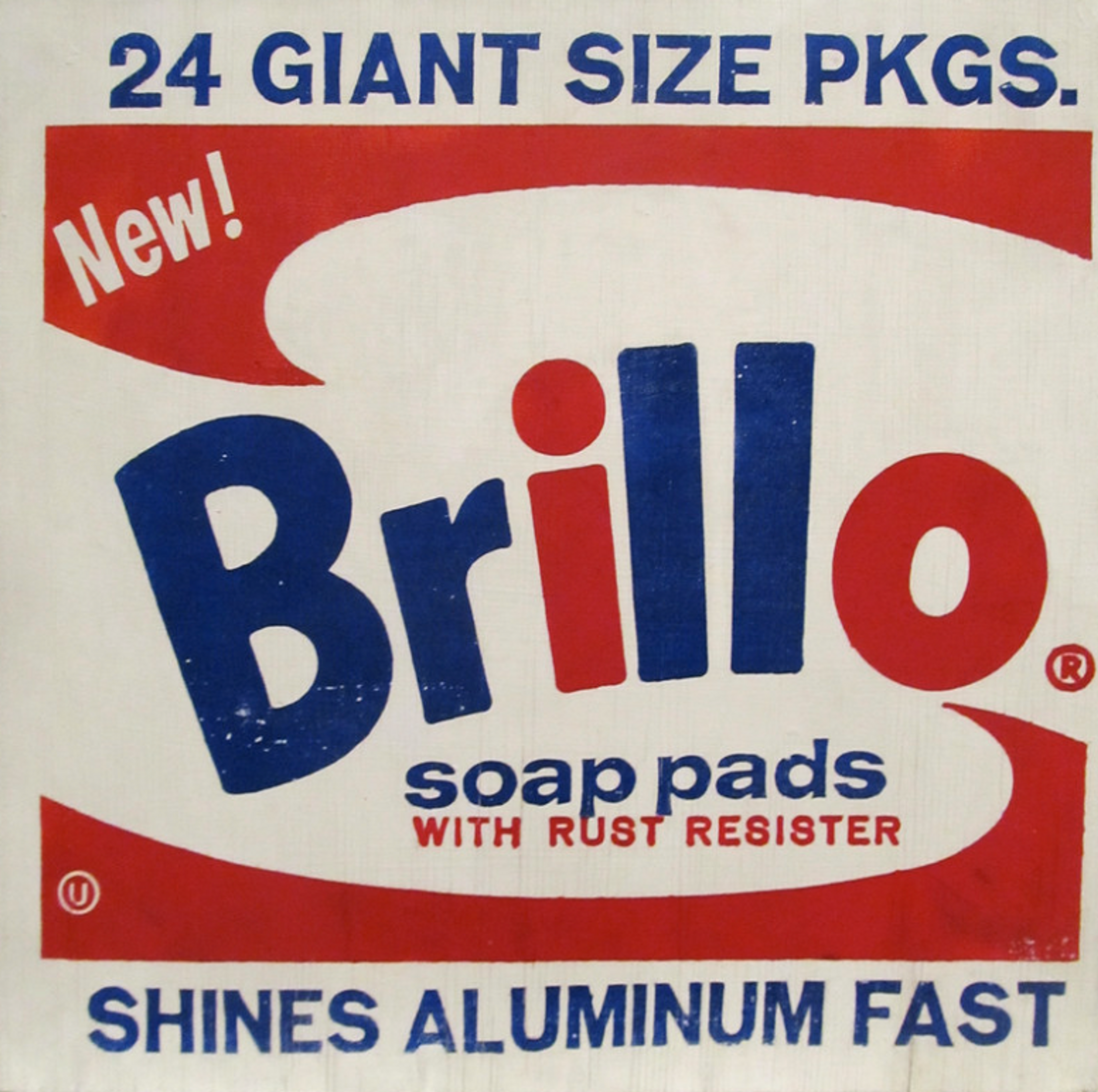 Image © rocor (CC) BY-NC 2.0 / Brillo Box © Andy Warhol 1970
Image © rocor (CC) BY-NC 2.0 / Brillo Box © Andy Warhol 1970 
Interested in buying or selling
Andy Warhol?

Andy Warhol
487 works
The Brillo Box is an image that has now become synonymous with the king of Pop Art and consumerist champion Andy Warhol. To learn more, see our 10 facts below:
When did Warhol create Brillo Box?
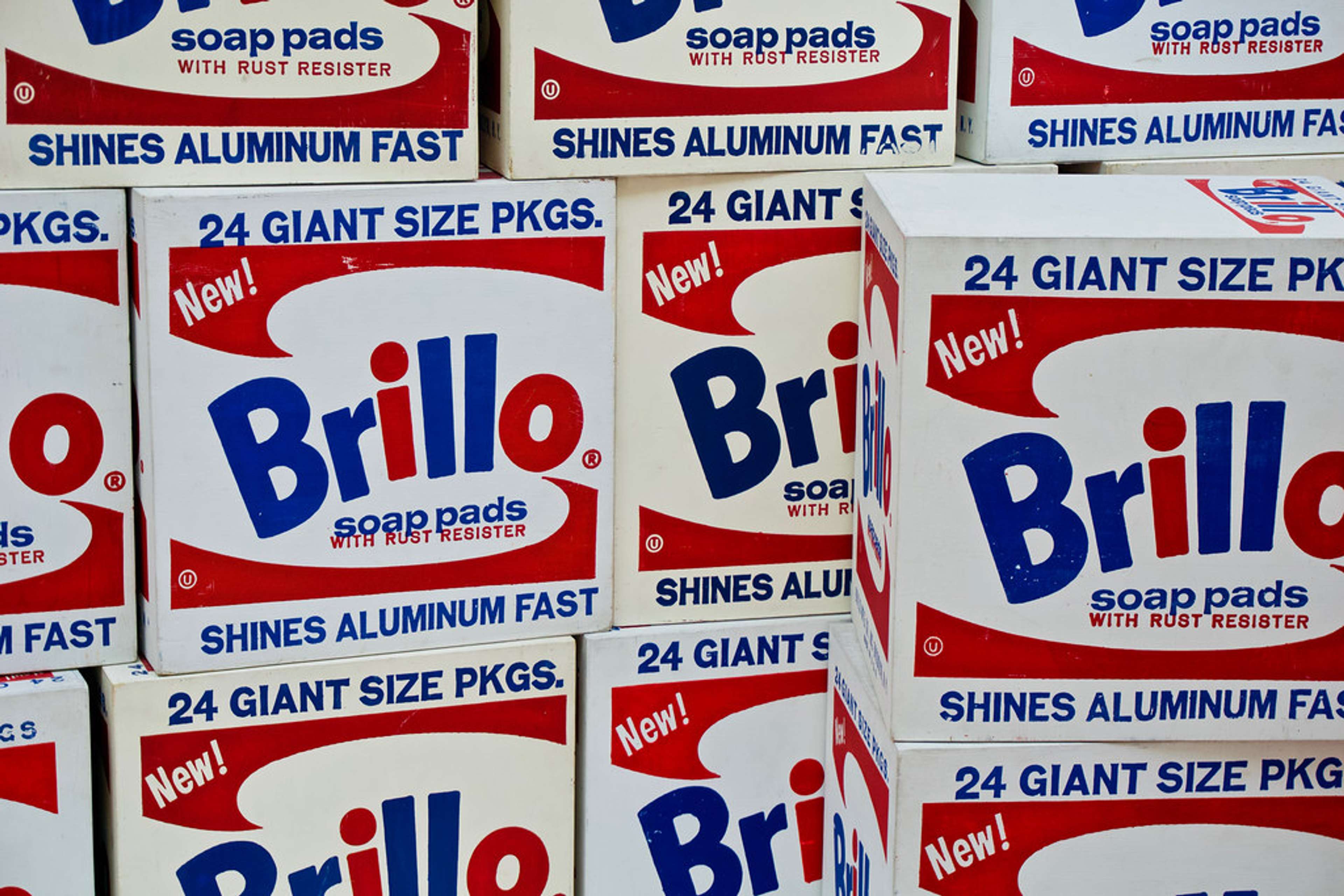 Image © NatalieTracy / Brillo Box © Andy Warhol 1964
Image © NatalieTracy / Brillo Box © Andy Warhol 1964Warhol unveiled the first Brillo Boxes at the Stable Gallery in New York in 1964. But the artist had been replicating grocery store products since 1962, first creating screenprints of Campbell’s soup cans, then sculptures of packaging for Kellogg’s cornflakes, Heinz ketchup, Brillo soap pads and other brands.
The Brillo Boxes were one of the first artworks made in Warhol’s new studio
 Andy Warhol in the first 'Factory' with his Elvis Prints (Image © rocor)
Andy Warhol in the first 'Factory' with his Elvis Prints (Image © rocor)On 28 January 1964, Warhol moved into a new workspace, one of his many locations for his studio, The Factory. “A few days after the move… a truckload of wood boxes arrived,” recalled Gerard Malanga, Warhol’s studio assistant at the time.
These became the Brillo Boxes and other consumer product-inspired sculptures. Malanga and photographer Billy Linich (better known as Billy Name) first hand-painted each box, then Warhol and Malanga silkscreened the designs. “Completing the work took nearly six weeks, from early February well into mid-April,” Malanga said.
What is the meaning behind Warhol’s Brillo Box?
 Image © pedrosimoes7 / Brillo Boxes© Andy Warhol 1964
Image © pedrosimoes7 / Brillo Boxes© Andy Warhol 1964Warhol’s Brillo Box sculptures are life-size replicas of real shipping cartons by Brillo, a popular brand of American washing-up pads. At 17 x 17 x 14 inches in size, each authentic, cardboard Brillo box would have held 24 individual soup pads. Warhol’s Brillo Box, however, were constructed with plywood.
Did Andy Warhol design the Brillo Box?
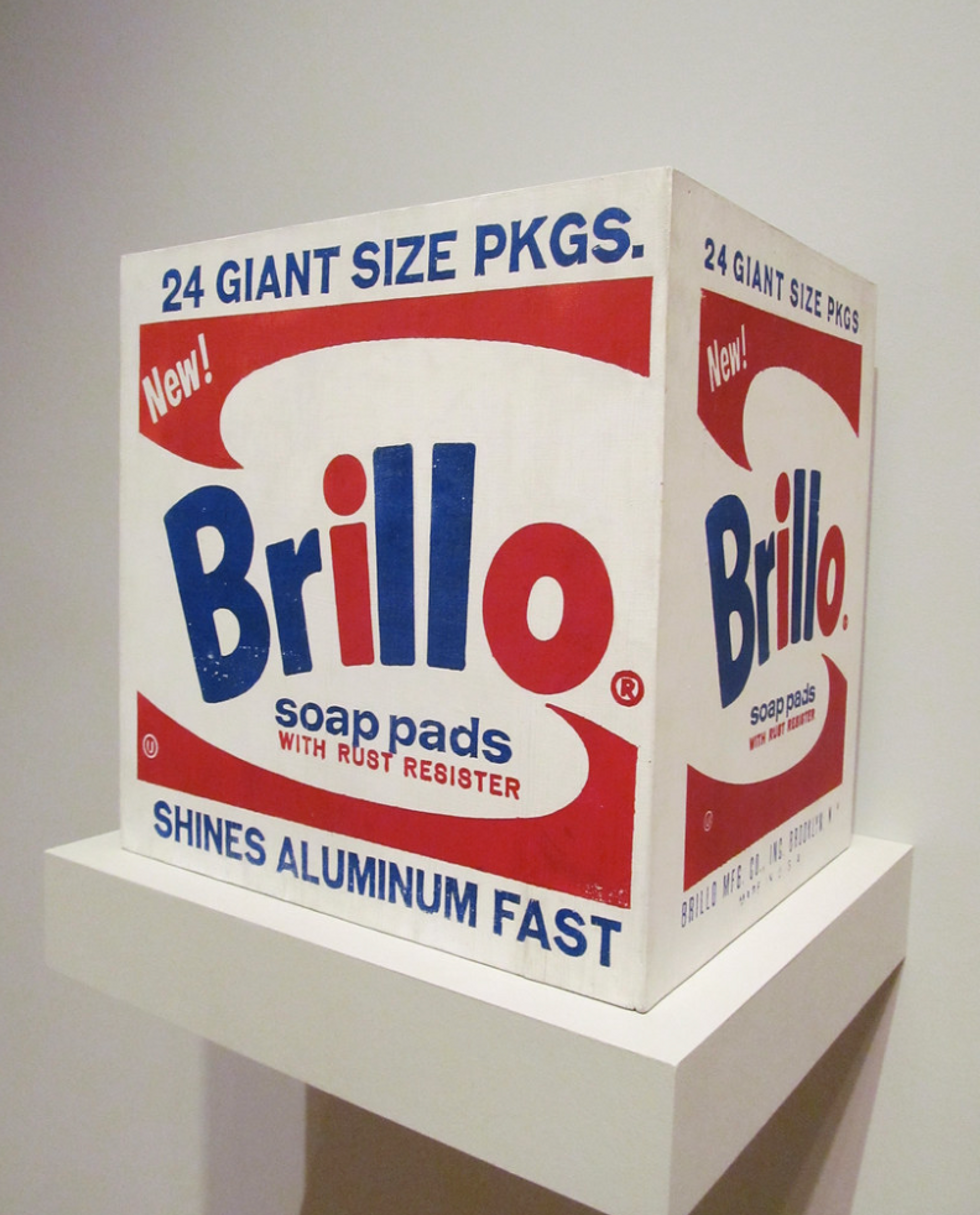 Image © rocor / Brillo Box © Andy Warhol
Image © rocor / Brillo Box © Andy WarholOn the contrary, no, Warhol appropriated the Brillo Box from another artist. The real boxes for Brillo soap pads were designed in 1961 by James Harvey, a commercial artist by day and an Abstract Expressionist painter by night. When Harvey walked past Warhol’s Stable Gallery exhibition on 21 April 1964, he reportedly said, “Oh my god, I designed those.” Harvey did not consider Warhol’s appropriation as ‘art’.
In a 1964 interview, Warhol was asked by a reporter, “you have just then copied a common item… why have you bothered to do that, why not create something new?”, to which Warhol replied, “because it’s easier to do… it gives me something to do.”
What was the reaction to Brillo Box?
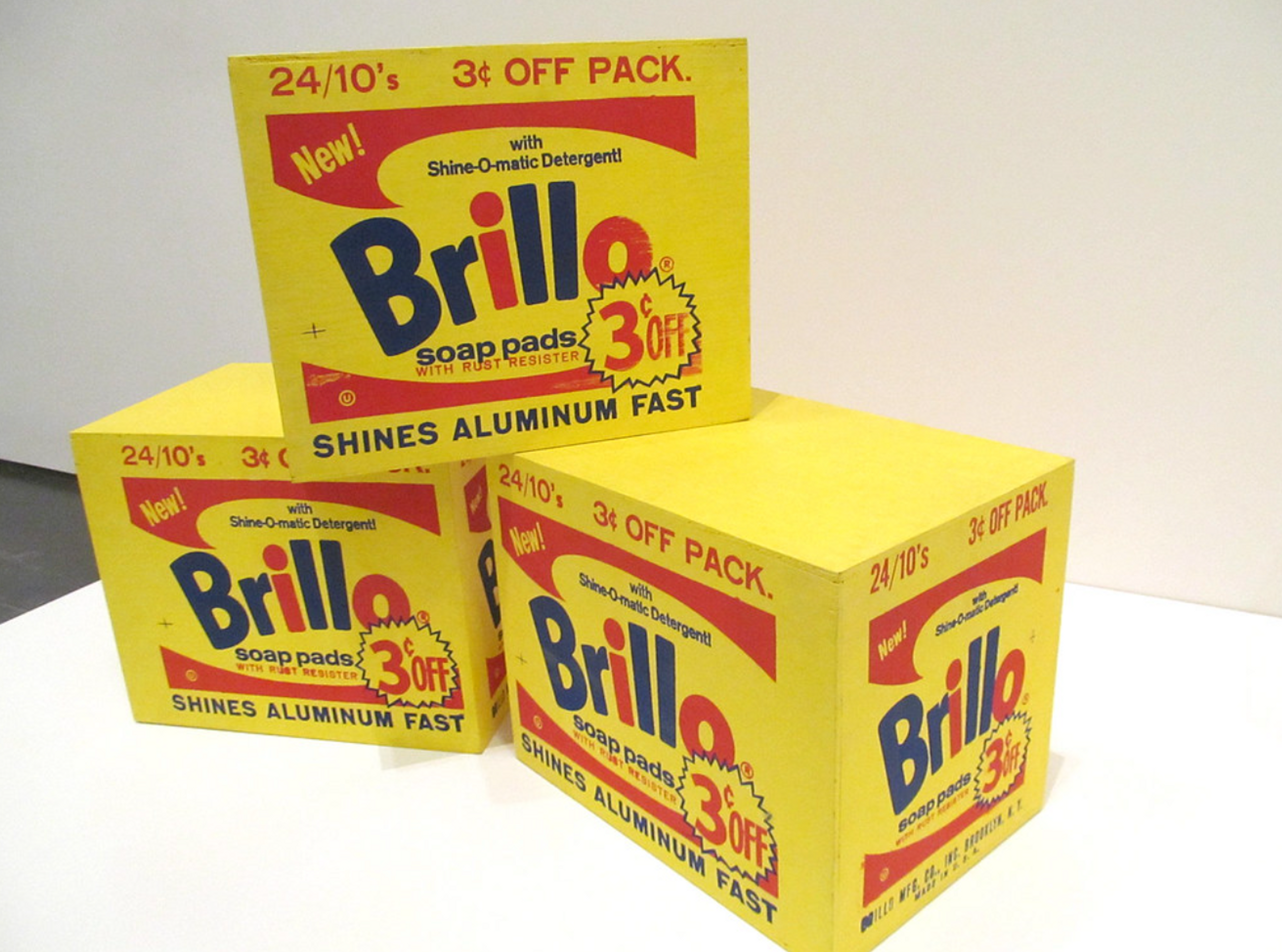 Image © rocor / Brillo Boxes (yellow) © Andy Warhol
Image © rocor / Brillo Boxes (yellow) © Andy WarholWarhol had high hopes for his Brillo Boxes but their reception was controversial – art critics questioned if the sculptures were art, and one visitor to the Stable Gallery exhibition wrote “SHIT” in the guest book. Eleanor Ward, the art dealer at Stable Gallery at the time, remembered that the Brillo Boxes were “very difficult to sell…We all had visions of people walking down Madison Avenue with these boxes under their arms, but we never saw them.”
How many Brillo Box variations did Andy Warhol make?
 Image © Chris and/or Kevin / Brillo Box © Andy Warhol 1964
Image © Chris and/or Kevin / Brillo Box © Andy Warhol 1964Warhol created three different designs for his Brillo Box sculptures, but the wooden, white, blue and red square version – often titled Brillo Box or Brillo Soap Pads – is possibly the most recognisable. A wooden, yellow, red and blue square version, titled Brillo Box (3 cents off), is among the most expensive at auction. In the late 1970s, Warhol also made a rectangular Brillo Box out of cardboard, in blue, red and white colours.
Warhol created posters of Brillo Box in 1970
 Brillo (Pasadena Art Gallery Poster) © Andy Warhol 1970
Brillo (Pasadena Art Gallery Poster) © Andy Warhol 1970For a retrospective of his work at the Pasadena Art Museum from 12 May – 21 June 1970, Warhol created this screen-printed exhibition poster of a Brillo Box in a special green, blue and yellow colour variation. A hundred extra Brillo Box sculptures were also created for the event.
Today, Brillo Box is one of Warhol’s most recognisable works
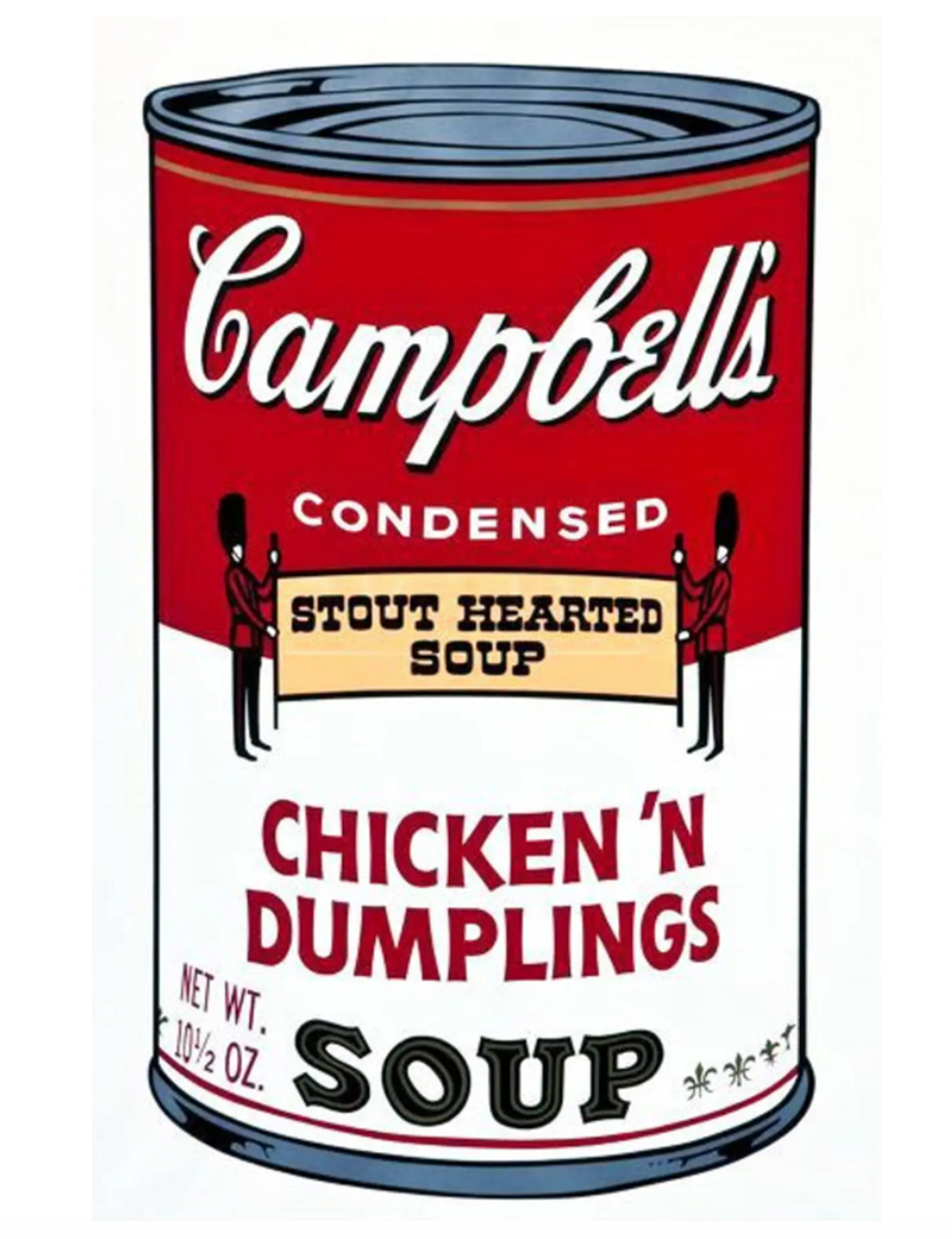 Campbell's Soup 2: Chicken n' Dumplings © Andy Warhol 1969
Campbell's Soup 2: Chicken n' Dumplings © Andy Warhol 1969Like Campbell’s Soup Cans, Brillo Boxes epitomise Warhol’s fascination with mass-produced images, packaging and items, blurring the line between art and everyday commodities. Brillo Box sculptures are now in the collections of the Museum of Modern Art in New York, the Philadelphia Museum of Art and Princeton University Art Museum. This, in turn, has created high demand for Brillo Box sculptures at auction.
Brillo Box continues to inspire artists and designers
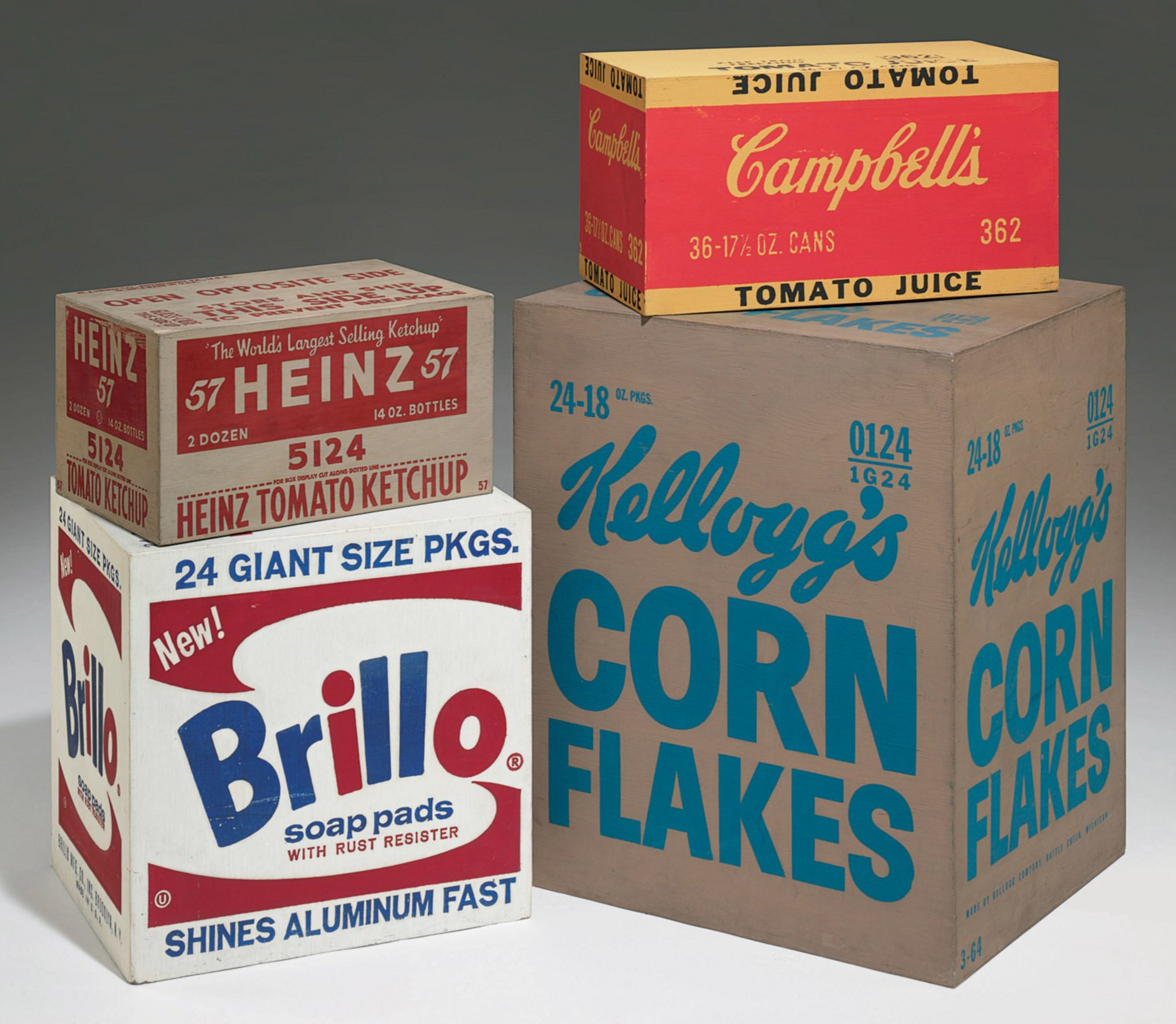 Image © Christies / Set Of Boxes © Andy Warhol 1964
Image © Christies / Set Of Boxes © Andy Warhol 1964Artist Charles Lutz presented an art installation of replica cardboard Brillo Boxes at the Armory Show, New York, in 2013. Titled BABEL (Brillo Stockholm Type), the idea was to “disseminate the Brillo Box to the masses,” explained Lutz in a video interview with Blouin Artinfo. “Each day, a new BABEL tower is erected out of Brillo Boxes and each visitor is encouraged to take one, fulfilling Warhol’s idea of everyone in New York City carrying around a Brillo Box.”
Meanwhile, Tatsuhiko Akashi, who created the collectibles Bearbricks, created a Warhol Brillo Box inspired Bearbrick in 2021.
One Brillo Box broke auction records in 2010 at Christie’s
Trailer for Lisanne Skyler's 'Brillo Box (3 cents off)' documentary.
Brillo Box (3 cents off) almost quadrupled its high estimate of US$800,000 when it sold for US$3,050,500 at Christie’s in New York on 10 November 2010. The sculpture was purchased in 1969 by Martin and Rita Skyler for just US$1,000, and was later owned by British collector Charles Saatchi and Robert Shapazian, the late founding director of Gagosian Gallery.
Martin and Rita Skyler’s daughter Lisanne wrote and directed a documentary about Brillo Box (3 cents off). It was shortlisted for an Oscar award in 2016.